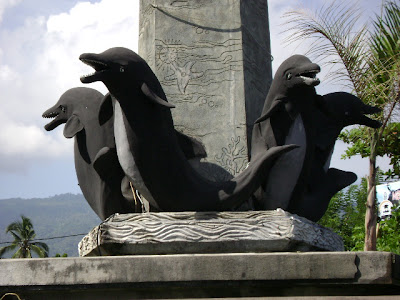 |
| Padanggalak Beach |
Padanggalak Beach: A Spiritual and Recreational Gem in Bali
Padanggalak Beach, located on the east coast of Bali, is a place of deep cultural and spiritual significance for the island's Hindu community. It plays a vital role in Bali's religious traditions, particularly during the days leading up to the sacred Nyepi holiday, or the Day of Silence. Three days before Nyepi, the beach becomes the focal point for the Melasti ceremony, a purification ritual that symbolizes cleansing the body and soul, as well as the sacred objects used in temple rituals.
During this time, Hindus from across Bali, especially from Denpasar, flock to Padanggalak Beach to participate in the Ida Batara Masucian, or the cleansing of the Pretima, sacred temple objects that represent the deities. This ceremony is performed to wash away impurities and negative energies, ensuring a fresh start before Nyepi, a day dedicated to silence, reflection, and fasting. For the residents of Denpasar, Padanggalak Beach becomes the central location for this important ritual, drawing hundreds, if not thousands, of participants.
The Melasti ceremony is a vibrant and spiritually moving event. Dressed in traditional Balinese clothing, participants carry sacred temple heirlooms down to the water’s edge, where they are cleansed by the ocean’s purifying force. The scene is filled with color, music, and prayer, making it a deeply enriching cultural experience for both participants and observers.
While Padanggalak Beach is deeply rooted in Balinese Hindu culture, it has also emerged as a growing tourist destination. Its natural beauty, tranquil atmosphere, and convenient location next to the famous Sanur Beach make it an appealing spot for both locals and visitors alike. Every Sunday, the beach becomes a popular gathering spot for families and friends, who come to relax by the shore and enjoy the cool sea breeze.
The beach is also known for its impressive waves, attracting surfing enthusiasts from across the island. For those who love water sports, Padanggalak offers a more peaceful alternative to some of Bali’s busier surfing spots. The large waves provide an excellent challenge for intermediate and experienced surfers. However, the strong ocean currents mean that swimming can be risky, and it is advised that only those who are strong swimmers or familiar with the area enter the water. For inexperienced swimmers, enjoying the view and the cool breeze from the safety of the shore is a better option.
Padanggalak Beach’s unique combination of spiritual significance and recreational appeal makes it a fascinating destination for visitors who want to experience a different side of Bali. While many come to Bali for its famous beaches, luxurious resorts, and vibrant nightlife, Padanggalak offers a quieter, more authentic experience. Here, the balance between spirituality and leisure is tangible, making it a great destination for those seeking a deeper connection to Balinese culture.
In conclusion, Padanggalak Beach is not just a place of religious importance but also a growing hub for tourism and recreation. Its role in Bali’s Hindu traditions, particularly during the Melasti ceremony, adds cultural depth to any visit. Meanwhile, its natural beauty, cool sea breeze, and powerful waves provide an inviting space for relaxation and adventure alike. Whether you are drawn to its spiritual atmosphere or its natural charm, Padanggalak Beach is a must-visit destination in Bali.













